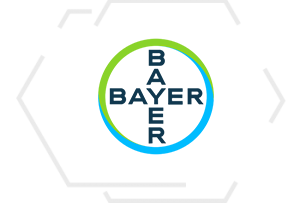



Donatix offers supply chain solutions designed to enhance inventory management by reducing stockouts and eliminating excess inventory. Our customized approaches help businesses maintain optimal product levels, resulting in cost savings and heightened customer satisfaction.

We offer a free discovery and business consultation to enhance your idea for optimal business success.
Defining objectives, planning, and strategizing development roadmaps with set estimations.
We swiftly develop your project, adjusting to feedback to meet your evolving needs promptly.
Continuous support ensures post-production assistance with reliability.
Empowering our web solutions with Vue.js, Node.js, Laravel, and Angular, we ensure optimal performance and user-centric design. Each technology is chosen for its prowess in creating fast, reliable, and scalable web applications.
Our supply chain solutions offer clear tracking and visibility from procurement to delivery, helping businesses make informed decisions and quickly address any issues.
Donatix streamlines procurement processes with automated workflows and supplier management tools. By digitizing procurement operations, businesses can reduce manual errors, shorten lead times, and negotiate better terms with suppliers, ultimately improving overall efficiency and cost-effectiveness.



We've had the privilege of supporting more than 100 business owners globally with our development services.
"We have been partnering with Donatix for four years, and we have always found them to be a reliable, dependable, and diligent partner whom we have always been able to count on. Their development efforts enabled our product to achieve a market-leading position and the web platform and mobile application they developed are used daily by millions of users in schools all across America. They have managed exponential growth in our user base and they have found creative ways to allow our product to remain responsive and stable in the midst of these challenges. Their team has consistently given their best and helped us achieve our goals."

"Donatix created a series of websites for us that have become highly trafficked on a daily basis. Their team demonstrated outstanding professionalism, dedication, and an unwavering commitment to meeting our deadlines. The quality of their work has been impeccable, consistently meeting our standards."

“Highly recommended for anyone seeking a dedicated development team and tangible business growth!”

"Collaborating with Donatix on our latest project has been excellent. They successfully closed the project on time and met all of Discordia's requirements. Their professionalism and attention to detail were consistent throughout the project, ensuring everything was executed as planned.
Additionally, the post-go-live changes, due to new business requirements, were handled smoothly, demonstrating their ability to adapt and deliver under changing circumstances.
Thank you, Donatix, for your hard work and dedication. Your efforts have contributed significantly to the project's success."

"The Donatix team was always responsive and understanding, and we were confident enough that the project was in safe hands. We have established a great relationship mainly as a result of their professionalism and easy way of communication and continue to work with them on several other projects."

“They achieved their purpose and executed both apps in the best possible way. The UI/UX was absolutely fantastic. They were responsible for the whole execution, and they did a great job!”

“They're definetely my go-to development house for the foreseeable future.”

“They've delivered the first release despite us being a bit late providing information to them, which proves their performance abilities”

“Donatix's approach was, in large part why we managed to finish the project on time and have a successful launch.”

Implementing Supply Chain Solutions brings many benefits like better inventory management, shorter wait times, cost savings, happier customers, and a competitive edge. These solutions make processes smoother, cut down on delays, and help you work closely with suppliers and partners to meet customer needs efficiently.
Donatix offers a range of Supply Chain Solutions tailored to your business needs. Our services cover areas like inventory control, predicting demand, tracking the supply chain, managing transportation, organizing warehouses, and handling vendors. Whether you want to simplify buying, improve delivery, or make your supply chain tougher, we've got the skills to help.
We take a team-focused, data-driven, and goal-oriented approach to Supply Chain Solutions. We start by studying your current processes to find out what's working and what's not. Then, based on our findings, we create a plan using the latest tools and methods to fix problems and boost performance. Throughout the project, we keep communication open, involve everyone, and keep making improvements for lasting success.
1) defining clear objectives and goals
2) assessing current technological capabilities and infrastructure
3) identifying areas for improvement
4) prioritizing initiatives based on business impact
5) implementing digital tools and solutions, fostering a culture of innovation
6) continuous improvement, and measuring success through key performance indicators (KPIs).
Answer: When choosing a partner for Supply Chain Solutions, look for someone reliable and experienced, with a track record of success. Find a partner who knows your industry, understands your goals, and can offer customized solutions. Also, consider their tech skills, flexibility, dependability, and support services to ensure a partnership that adds value to your business.
1) defining clear objectives and goals
2) assessing current technological capabilities and infrastructure
3) identifying areas for improvement
4) prioritizing initiatives based on business impact
5) implementing digital tools and solutions, fostering a culture of innovation
6) continuous improvement, and measuring success through key performance indicators (KPIs).
Adding {{itemName}} to cart
Added {{itemName}} to cart